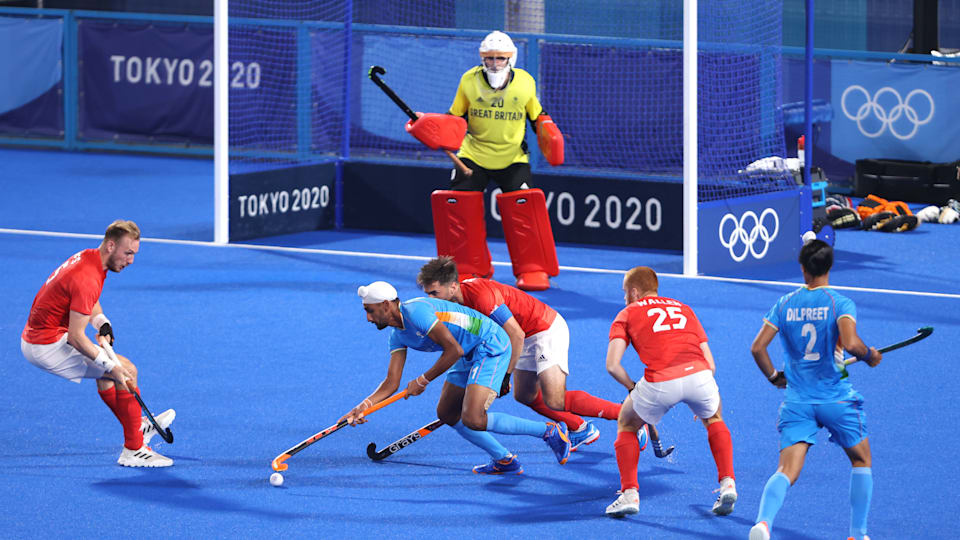
Ice hockey is an exhilarating, high-speed sport that captivates fans around the world with its blend of speed, strategy, and physicality. For newcomers, however, the fast-paced nature of the game can make it a little daunting to follow. This comprehensive guide will help you understand the basic rules of ice hockey, including the structure of the game, player roles, penalties, and scoring systems. By the end, you’ll be well on your way to enjoying the sport like a seasoned fan.
Basic Objective of Ice Hockey
At its core, ice hockey is a team sport where two teams of skaters use sticks to direct a rubber puck into the opponent’s goal. The team that scores the most goals by the end of the game wins. slot bisa depo 5000
Game Structure and Time Format
Periods and Duration
A standard ice hockey game consists of three periods, each lasting 20 minutes of play time.
Between each period, there is a 15- to 20-minute intermission.
If the game is tied at the end of the third period, overtime is played. In most regular-season games, this is a 5-minute sudden-death period (first team to score wins). In playoffs, overtime continues in 20-minute periods until a winner is decided.
Clock Rules
The clock stops whenever play is halted, such as for penalties, offsides, or goals.
Play is restarted with a face-off at a designated face-off spot.
Team Composition
On-Ice Players
Each team has six players on the ice during even-strength play:
1 goaltender (goalie)
2 defensemen
3 forwards: left wing, center, and right wing
Substitutions
Substitutions are unlimited and can happen on-the-fly (during live play) or during stoppages.
Teams typically roll through four lines of forwards and three pairs of defensemen to maintain energy.
The Rink Layout
A standard ice hockey rink is 200 feet long and 85 feet wide. Key areas include:
Goal Crease: Semi-circle in front of the net where the goalie primarily operates.
Neutral Zone: The center area between the two blue lines.
Defensive and Offensive Zones: Each team has one of each, separated by the neutral zone.
Face-off Circles: Used to resume play, located in all three zones.
Basic Gameplay Rules
Face-Offs
The puck is dropped between two opposing players to start play after a stoppage.
Face-offs occur at one of the nine designated circles on the rink.
Offside
A player is offside if they enter the offensive zone before the puck crosses the blue line.
Play is stopped, and a face-off occurs outside the offending team’s zone.
Icing
Icing occurs when a player shoots the puck from behind the center red line across the opponent’s goal line without it being touched.
This results in a face-off in the offending team’s defensive zone.
Icing is waived off if the team is shorthanded or if the opposing team could have played the puck.
Puck Out of Play
If the puck leaves the rink or gets lodged in equipment, play is stopped, and a face-off resumes from the nearest face-off circle.
Scoring a Goal
A goal is scored when the puck completely crosses the goal line between the goalposts and under the crossbar, provided it was not kicked, batted, or thrown in.
Only sticks can be used to legally direct the puck into the net.
Video review is used in the NHL and other professional leagues to confirm controversial goals.
Penalties and Infractions
When a player breaks a rule, they can be penalized and sent to the penalty box, giving the opposing team a power play (a numerical advantage on the ice).
Types of Penalties
Minor Penalties (2 minutes)
Tripping
Hooking
Slashing
High-sticking
Holding
Interference
Too many men on the ice
Major Penalties (5 minutes)
Fighting
Boarding (deliberate body check into boards)
Charging (taking too many strides before a hit)
Spearing
Misconduct Penalties (10 minutes)
Unsportsmanlike conduct
Abuse of officials
Repeated minor infractions
Match Penalties
Severe infraction resulting in ejection from the game.
Power Play and Penalty Kill
The team with more players has a power play.
The penalized team is on a penalty kill.
A power play ends if the team with the advantage scores (unless it’s a major penalty).
Overtime and Shootouts
Regular Season (NHL)
5-minute 3-on-3 overtime.
If still tied, the game goes to a shootout.
In shootouts, each team selects 3 players to take penalty shots. If tied after 3 rounds, it goes to sudden death.
Playoffs
Continuous 20-minute sudden death overtime periods until a goal is scored.
Referees and Officials
A team of officials enforces the rules:
2 referees (wear orange armbands): call goals, penalties.
2 linesmen: call offsides, icing, and conduct face-offs.
Off-ice officials: manage the game clock, penalty boxes, and scoring records.
Key Strategies and Formations
Offensive Strategy
Forechecking to regain puck possession.
Creating traffic in front of the goalie for deflections.
Quick puck movement and one-timers.
Defensive Strategy
Man-to-man or zone coverage.
Clearing the puck from the crease.
Blocking shots and limiting scoring chances.
Goaltending Rules